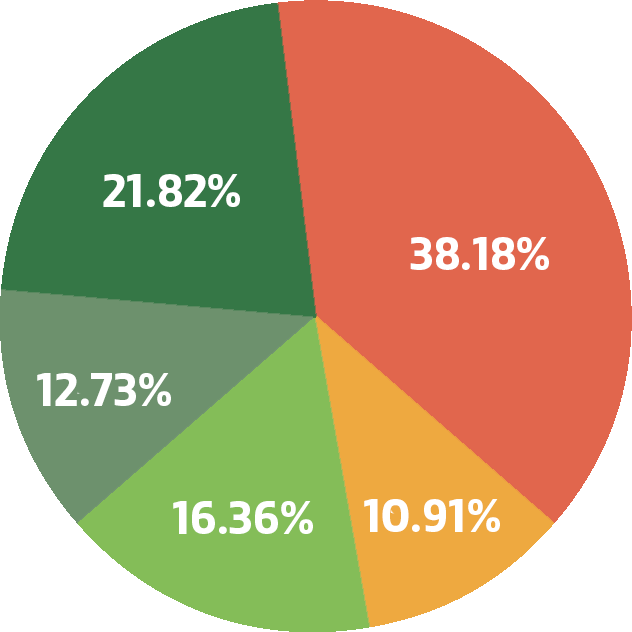ThaiBev regularly conducts a Water Sustainability Assessment (WSA) to assess its dependencies on both surface water and groundwater resources at production facilities, in order to identify any potential impacts and risks associated with its business units.
This in-depth assessment covers four dimensions:
- Detailed water source assessment, including the availability and internal structure of water resources.
- The vulnerability of the watershed, considering both social and environmental factors.
- Water-related natural occurrences, such as droughts and floods, etc.; and
- The quality of water sources.
This assessment covers a period of five years to ensure there are sustainable water supplies to support the facilities’ operations. Processes in the study include: water sufficiency, water quality, rules and regulations related to water resources, and stakeholders’ perception.
WSA allows ThaiBev to create a comprehensive risk mitigation strategy and action plan that is appropriate for local conditions while addressing both long-term and short-term water-related risks.
In parallel, ThaiBev uses the Water Risk Tool to assess annual operational risks—those related to water quantity and quality, regulatory requirements, and reputational concerns—across all production facilities. This tool enables the company to evaluate historical risks over the past three years and anticipate future scenarios, including potential changes in future water quantities and future water qualities. In 2024, ThaiBev experienced no operational impacts from physical water-related business risks.
| No. of Sites in each risk level |
| High Risk |
O sites
(TH = 0/ MYM = 0/ VN = 0/ UK = 0/ FR = 0/ NZ = 0) |
| Medium Risk |
4 sites
(TH = 2/ MYM = 0/ VN = 2/ UK = 0/ FR = 0/ NZ = 0) |
| Low Risk |
50 sites
(TH = 31/ MYM = 2/ VN = 9/ UK = 0/ FR = 0/ NZ = 0) |
Note: Thailand (TH), Myanmar (MYM), Vietnam (VN), Scotland (UK), France (FR) and New Zealand (NZ)
Water Sufficiency
ThaiBev monitors water availability monthly by comparing data from the National Hydroinformatics Data Center with internal forecasts. Risk Coordinators review reports, assess risks, and implement mitigation measures. Significant risks are escalated to the Corporate Risk Management. Our water-related risks are continuously monitored and effectively managed.
Water Quality
Water supply and effluent quality are monitored daily according to ISO 9001 and ISO 14001 guidelines. ThaiBev plants near the Chao Phraya and Tha Chin Rivers closely monitor surface water during the dry season due to saltwater intrusion, often substituting groundwater, which increases costs. To address shortages, freshwater storage and groundwater wells are enhanced.
Groundwater use is strictly regulated in critical zones. ThaiBev continuously monitors regulations and applies the 3Rs principle, adopts advanced technologies such as Reverse Osmosis, and reduces water consumption per unit of product.
To date, we have not experienced any impacts from physical risks.
| No. of Sites in each risk level (Physical Risk (Sufficiency and Quality)) |
| High Risk |
O sites
(TH = 0/ MYM = 0/ VN = 0/ UK = 0/ FR = 0/ NZ = 0) |
| Medium Risk |
2 sites
(TH = 1/ MYM = 0/ VN = 1/ UK = 0/ FR = 0/ NZ = 0) |
| Low Risk |
52 sites
(TH = 32/ MYM = 2/ VN = 10/ UK = 0/ FR = 0/ NZ = 0) |
ThaiBev’s production plants are members of the Federation of Thai Industries (FTI), which regularly provides updates on new regulations relevant to various industrial sectors. These updates are shared through the FTI website, email, and regular meetings.
Each production plant has established a working group responsible for monitoring and assessing compliance with applicable water-related laws and regulatory developments. This group reports any potential regulatory changes or newly issued laws to the Product Group’s Risk Coordinator.
At the corporate level, the Product Group’s risk coordinators consolidate and review information received from all production sites. Any risks identified as material are brought up to the Corporate Risk Management Working Team for further action.
No regulatory changes have resulted in adverse effects on our operations.
| No. of Sites in each risk level (Rules and Regulations Related to Water Resources) |
| High Risk |
O sites
(TH = 0/ MYM = 0/ VN = 0/ UK = 0/ FR = 0/ NZ = 0) |
| Medium Risk |
4 sites
(TH = 2/ MYM = 0/ VN = 2/ UK = 0/ FR = 0/ NZ = 0) |
| Low Risk |
50 sites
(TH = 31/ MYM = 2/ VN = 9/ UK = 6/ FR = 1/ NZ = 1) |
ThaiBev to employ third-party to conduct community perception surveys around its production sites, aiming to understand concerns on water availability and industry impacts. Each plant establishes a stakeholder engagement group to hold regular meetings with local leaders and authorities. Feedback and survey results are reviewed monthly and reported to the Product Group’s Risk Coordinators. Any material risks or potential conflicts are escalated to the Corporate Risk Management Working Team for further action, and there have been no water-related incidents that have impacted our operations.
| No. of Sites in each risk level (Stakeholders’ Perception) |
| High Risk |
O sites
(TH = 0/ MYM = 0/ VN = 0/ UK = 0/ FR = 0/ NZ = 0) |
| Medium Risk |
0 sites
(TH = 0/ MYM = 0/ VN = 0/ UK = 0/ FR = 0/ NZ = 0) |
| Low Risk |
54 sites
(TH = 33/ MYM = 2/ VN = 11/ UK = 6/ FR = 1/ NZ = 1) |







